The year of Safer Sidelines: The Courier Journal's athlete safety project is fueling change
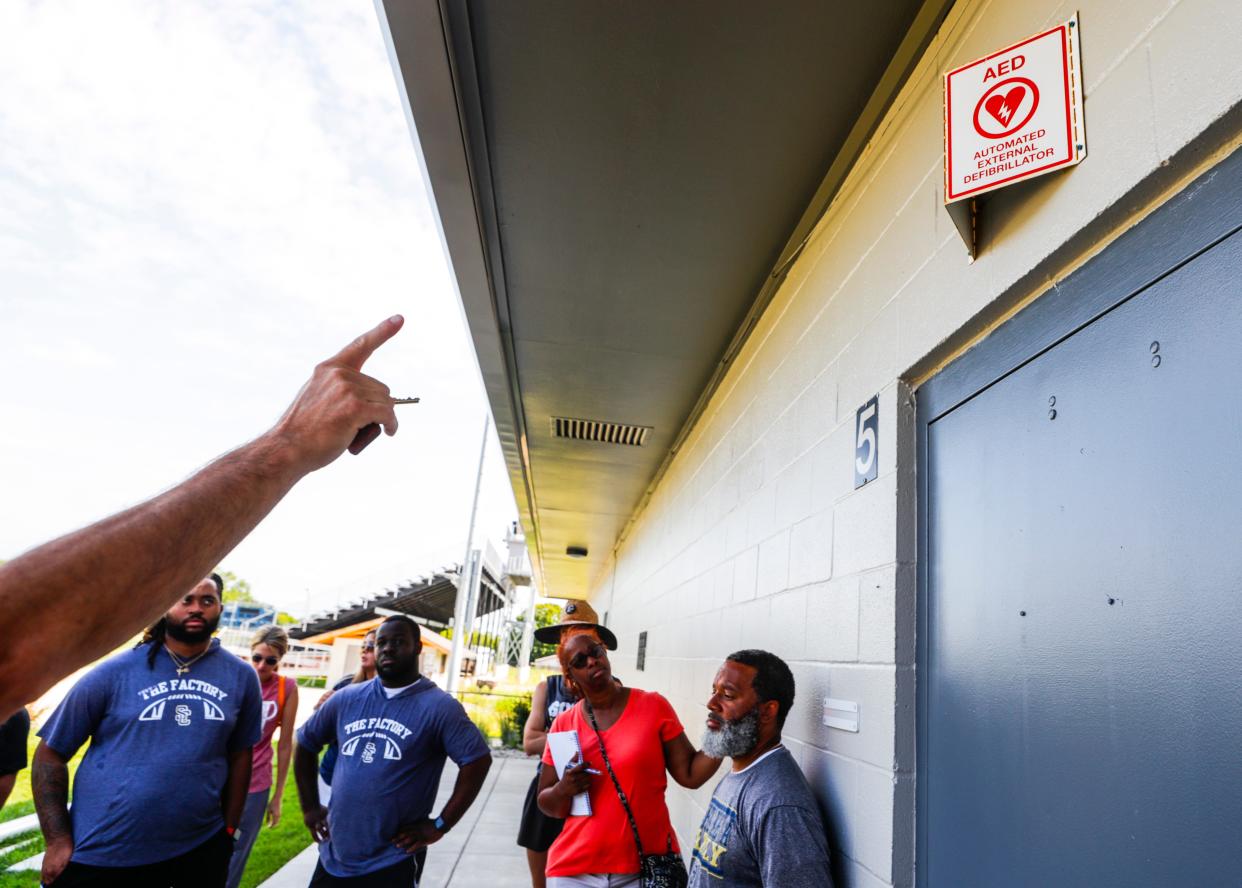
- Oops!Something went wrong.Please try again later.
A coach began chest compressions while another called 911.
A third ran to unlock the gate for the ambulance, while another ran to grab the automated external defibrillator, or AED.
It was an orchestra of movement.
But on this July day at Shelby County High School, coaches were only simulating their response to a sudden cardiac arrest, like the one seen on Jan. 2 in Cincinnati. That's when a hit to the chest of Buffalo Bills safety Damar Hamlin brought global attention to what critical sideline care and quick response can mean for an athlete.
Since Hamlin's collapse and the life-saving response, momentum in sideline preparedness has both been measurable and immeasurable. Athletic trainers are being recognized for those life-saving skills. The American Heart Association is emphasizing hands-only CPR. And the production of AEDs is booming, as demand surges.
Even before Hamlin's brush with death, The Courier Journal had begun investigating sudden death in youth athletes.
The resulting project, "Safer Sidelines," which published in April, has been heralded as a catalyst for change by industry experts, foundations and Kentucky's athletic association.
Among them is the Korey Stringer Institute, which was created following the sudden death of the Minnesota Vikings offensive lineman in 2001.
"Safer Sidelines is the single most impactful contribution to the health and safety of high school athletes that has ever been produced from a media source in our country’s history," said Doug Casa, the CEO of the Korey Stringer Institute, who has dedicated his career to helping overcome sudden death in athletes.
"Besides being exhaustingly researched, comprehensive, accurate, and moving, it also offers a roadmap as to how positive change can take place — both by example of other states that have a found a way to enact the policy, but also by sheer force of will — that knowing deep down inside that the efforts we make ‘before they die’ can resonate for a lifetime and have downstream influence unseen to the naked eye.”
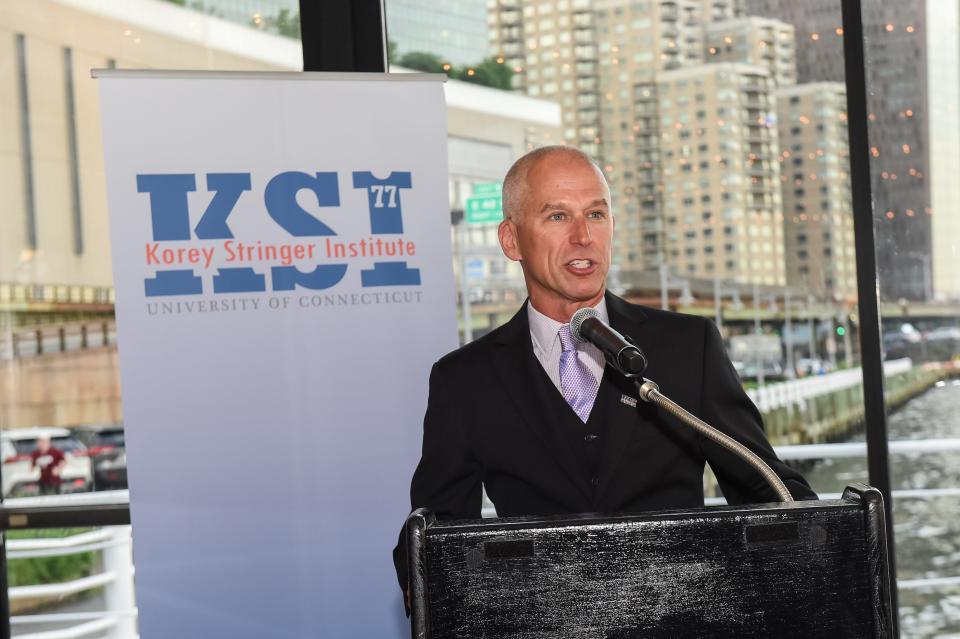
The project has received awards throughout the athletic training and journalism industry, including the National Athletic Trainers Association's President's Award, the Korey Stringer Institutes' Lifesaving Education Award and the Online News Association's Sports Health and Wellness Award.
Daniel Mohrbacher, executive director of the Yakima Heart Safe Initiative Inc., said it would be "inexcusable not to act on (The Courier Journal's) findings."
"Hundreds of lives — very young lives — will be saved because of [their] work," he said.
Here's more on how Safer Sidelines' findings have created an impact and furthered the conversation on athlete safety:
Who's using it?
The four-part series has been used in sports medicine conferences and symposiums. It's been featured on local and national radio shows and sports medicine podcasts, raising national awareness of the lack of gold standard-level safety on high school sidelines.
Following its publication, The Courier Journal, along with Spalding University, held a public forum on the project's findings. Spalding offers one of three athletic training education programs in Kentucky.
That forum highlighted the need for conversations between paramedics and athletic trainers prior to an athlete being injured.
Later, in July, more than 50 athletic trainers and first responders from Jefferson and Oldham counties gathered at St. Xavier High School for the first Interprofessional Emergency Training.
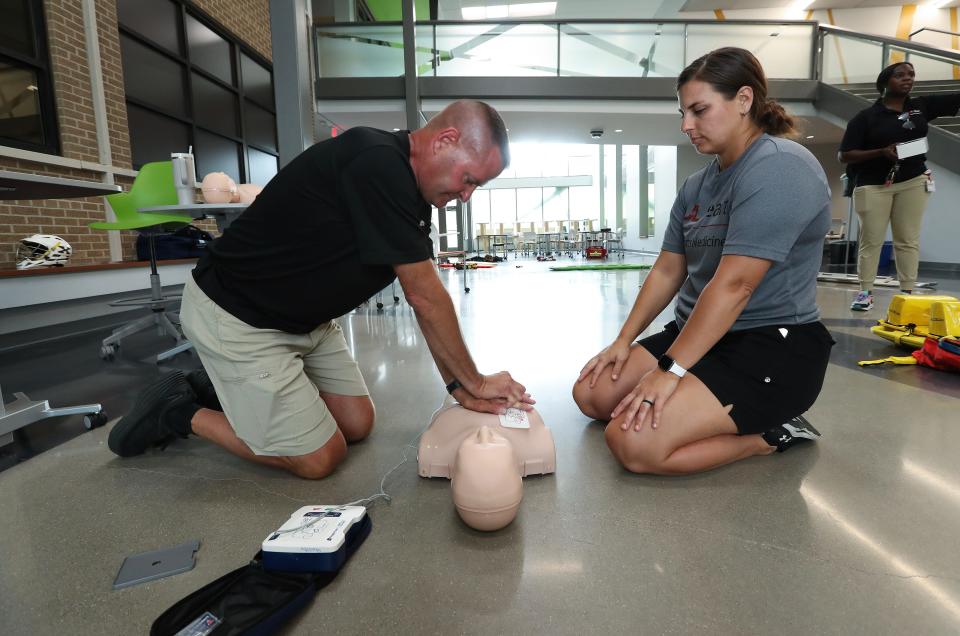
As part of Safer Sidelines, The Courier Journal reviewed every public high school's emergency action plan for athletics, which are required by law.
The review found only 23% of schools were likely following all six parts of the law.
In response, athletic emergency response plan expert Samantha Scarneo-Miller held a one-hour virtual forum open to Kentucky's athletic directors and athletic trainers to improve their EAPs.
Following that forum, Knott County athletic director Justin Amburgey asked to spend an hour reviewing his district's response plans with Scarneo-Miller. Amburgey created his venue-specific EAPs on his own because the district doesn't have an athletic trainer.
"Was I not doing it correctly the way I did it?" Amburgey asked Scarneo-Miller, as they began to review the document line by line during a video call.
"I can completely appreciate the rural nature of where you are," said Scarneo-Miller, who teaches at West Virginia University, in a state where only 43% of high schools have access to an athletic trainer, and of those, just 18% have access to one full-time.
"Kudos to you for trying to find somebody to help you provide emergency care. ... Reviewing your EAPs shows that you care and want to make those improvements," Scarneo-Miller told Amburgey.
Who's talking about it?
As athletic directors gathered during regional meetings this fall with the Kentucky High School Athletic Association, Safer Sidelines was a topic of conversation at each of the nine regionals.
"It was 100% positive," KHSAA commissioner Julian Tackett said. "We told everyone, 'Look, everybody is not going to treat you as professionally as (The Courier Journal) does. Some will put out raw data without calling you to see if it looks right.' (The Courier Journal is) very thorough. So get your (expletive) stuff updated and get caught up."
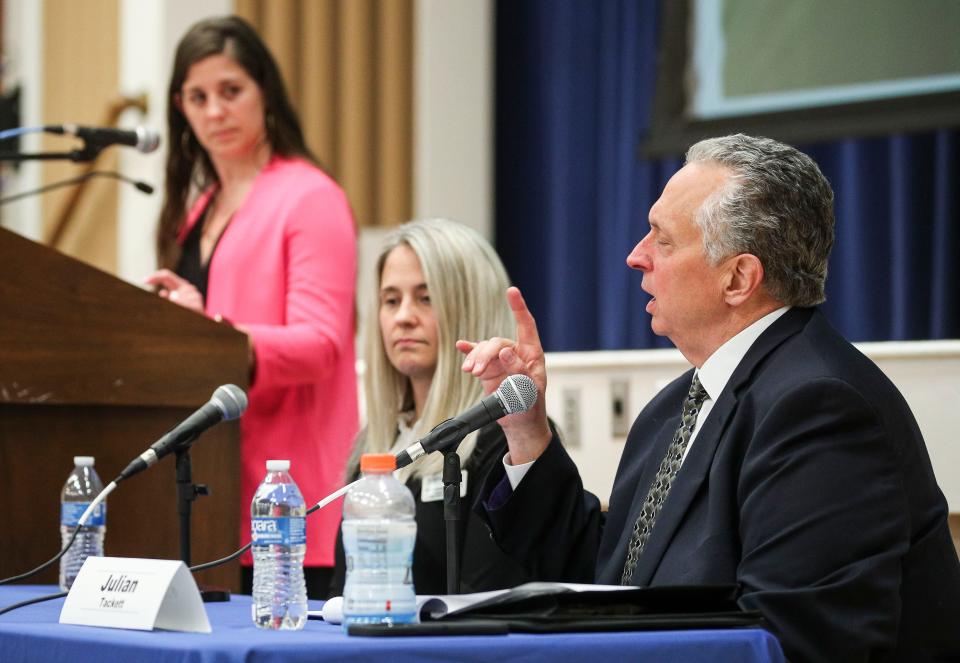
In its April report, The Courier Journal requested CPR certifications from all 233 public Kentucky High School Athletic Association member schools. Of the 122 public high schools that responded, The Courier Journal found 155 certifications for coaches were expired.
Another 170 coaches renewed their certifications within 10 days of The Courier Journal asking for the records.
CPR and first-aid training is required for Kentucky high school coaches, but in Safer Sidelines, The Courier Journal found the law is often disregarded.
Following the start of the fall sports season, The Courier Journal again requested the status of CPR certifications for coaches — this time, directly from the KHSAA.
The association responded to that records request a week later. It showed 248 coaches' certifications were expired, but a closer look showed an additional 238 coaches renewed their CPR certification after the records request to the KHSAA.
The Courier Journal later learned the KHSAA sent an email to athletic directors the day after the records request that touched on the findings of Safer Sidelines, reminding athletic directors to have coaches complete their health and safety certifications, which include CPR.
"We fully expect as a follow-up to media accounts during 2022-23, routine requests for sports coaching data, particularly around the safety-related requirements," the email stated.
Safer Sidelines also focused on the requirement that schools verify the existence of their emergency plans each year by signing the KHSAA's annual membership application.
The Courier Journal originally requested these annual verifications from high schools and found that not all member schools filled out the application, including a dozen that didn't fill it out until after The Courier Journal asked for the records.
In his August email to schools, Tackett wrote: "In addition, we expect your membership application to be (again) a subject of inquiries into how strongly you are adhering to state guidelines, you may want to be sure yours is current ..."
Tackett said the KHSAA is working to find a way for their system to better alert schools when coaches' certifications are expired as a result of Safer Sidelines.
What's still to be done?
Under the lights of a Friday night in August, as the La Porte (Indiana) High School football team ran toward the end zone at the start of the game, each football player reached down to touch the 26-yard line.
Twenty-six in honor of No. 26, Jake West.
West died in 2013 of sudden cardiac arrest. The closest AED was locked in the coach's office.
Now, the closest one hangs in the tunnel. And on this night, West's jersey was being retired.
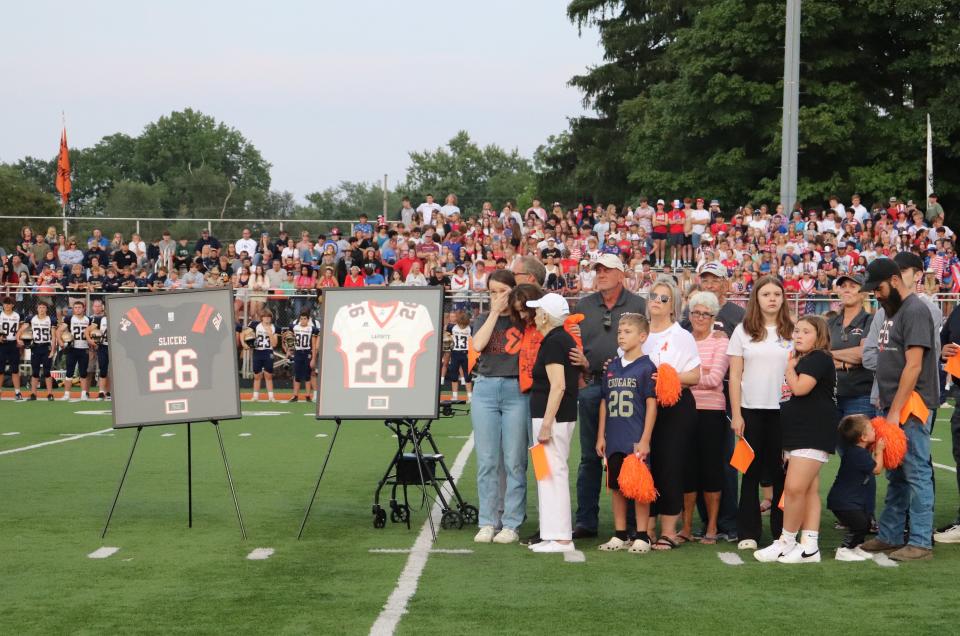
For the last 10 years, Jake's mother, Julie, has grown a foundation that provides AEDs to schools and law enforcement across Indiana. Even a pre-game carnation drive in Jake's honor helped to buy multiple AEDs.
Julie is one of nearly a dozen parents who worked with her state's legislature to enact stronger laws around sudden cardiac arrest.
"I am so grateful for the work [The Courier Journal] has done to raise awareness of the importance of better protecting everyone on the sidelines," West said. "Safer Sidelines means having a readily available AED and a plan in place when sudden cardiac arrest happens. Jake and his teammates didn't have that protection, but with [The Courier Journal's] hard work in bringing these stories to the forefront, there's no doubt in my mind that lives will be saved because of [its] commitment to raising this life-saving awareness."
In September, Alan Dodson, the father of Pulaski County senior Andrew Dodson, posted a birthday wish on social media about Safer Sidelines.
During a spring football scrimmage, Andrew suffered a traumatic brain injury and died, just 15 days before Safer Sidelines published.
"I’ve never gone public with a birthday request, but today I am," Alan Dodson wrote on Facebook. "I’m asking everyone who sees this (especially those who parent student-athletes) to please share this post and fully absorb the work of ... Safer Sidelines. It could save a young person’s life. (I’m looking for at least 50 shares for my birthday.)"
The post was shared more than 200 times.
"Safer Sidelines is a groundbreaking piece of investigative journalism," Troy Pflunger, the vice president of sales for Zoll, a manufacturer of defibrillators, said in a statement. "It puts a much-needed spotlight on sudden cardiac arrest as the #1 killer of young athletes, thoughtfully exposing how a little bit of preparedness can go a long way to prevent these tragic deaths."
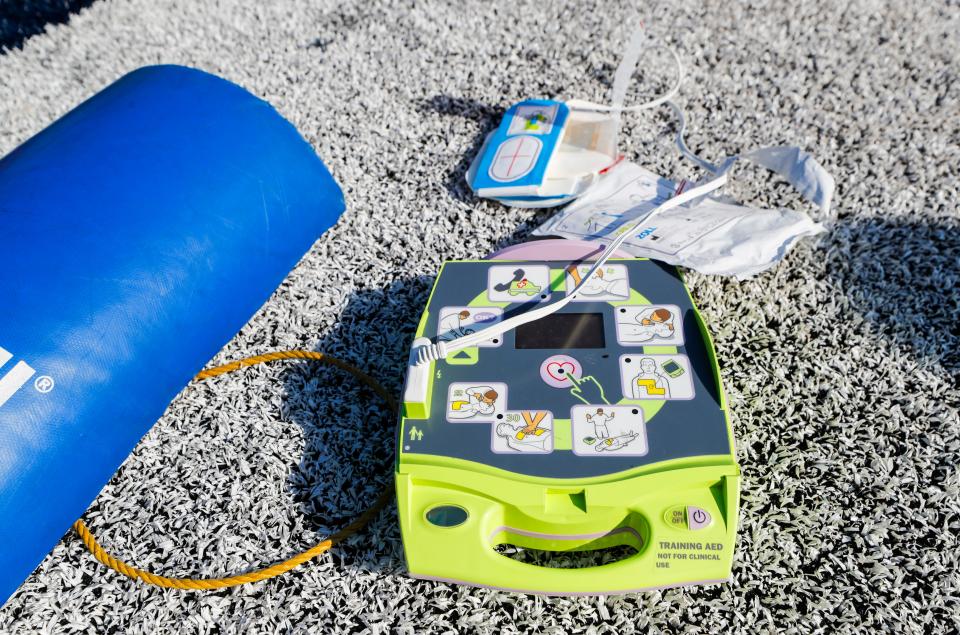
The project drew the attention of two high school seniors in Las Vegas, who want their senior project to duplicate Safer Sidelines' research in high schools across their state and determine the cost of adding AEDs to all Nevada high schools. That project is underway.
Locally, nearly 1,000 flyers have been distributed across 11 pediatric offices in the Louisville area to parents of athletes to help them better understand the four leading causes of death in high school athletes.
"Safer Sidelines helped to expose the reality about sudden cardiac arrest in young athletes," said Joseph Mullally, senior vice president of commercial operations for Defibtech, another defibrillator manufacturer. "It helped to facilitate many of the conversations we have had this year with youth sports organizations and played a crucial role in raising awareness, which will ultimately help to save more lives."
Dave Hiltz, co-chair of the Citizen CPR Foundation's summit on cardiac arrest survival, said: "Having dedicated my career to improving outcomes, I am confident that Safer Sidelines will help improve preparation, recognition, response, care and outcomes for those stricken by sudden cardiac arrest."
But despite all the conversations, awareness and education from Safer Sidelines, high school athletes have continued to die.
Twenty-six, so far, this year.
There is more work left to do.
Stephanie Kuzydym is an enterprise and investigative sports reporter, with a focus on the health and safety of athletes. She can be reached at skuzydym@courier-journal.com. Follow her for updates at @stephkuzy
This article originally appeared on Louisville Courier Journal: Courier Journal's Safer Sidelines project has impact on athlete safety
